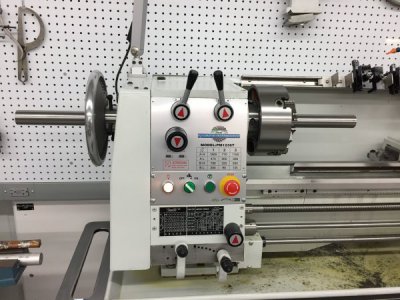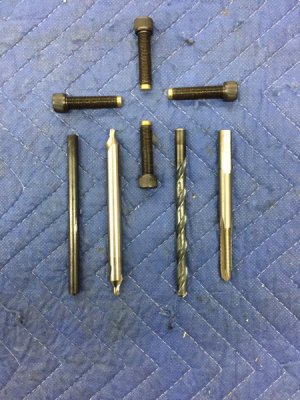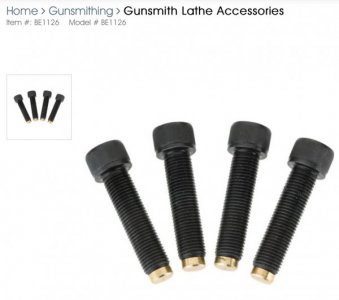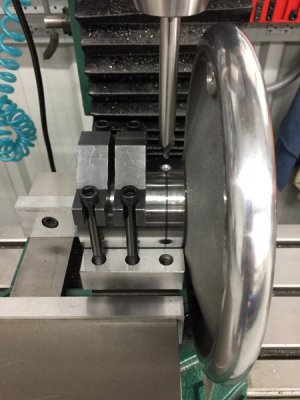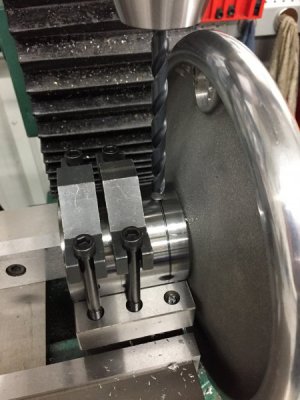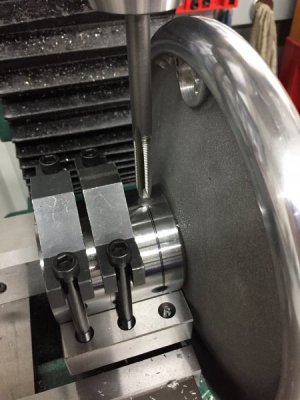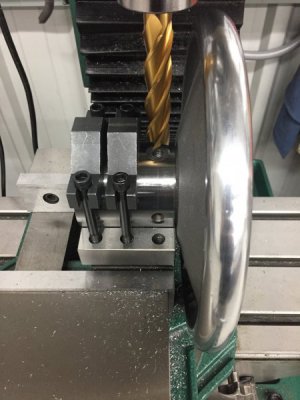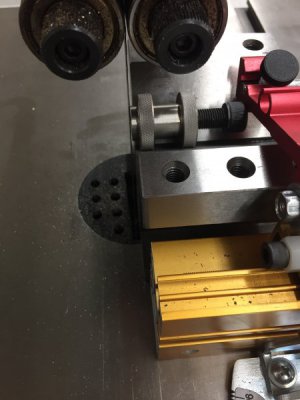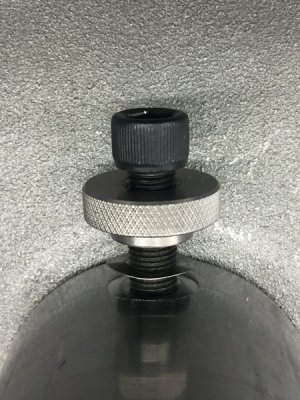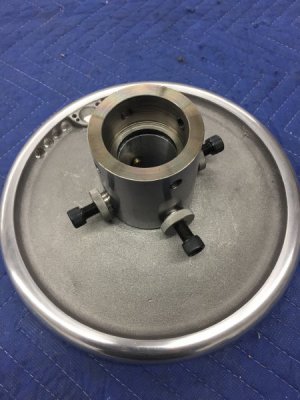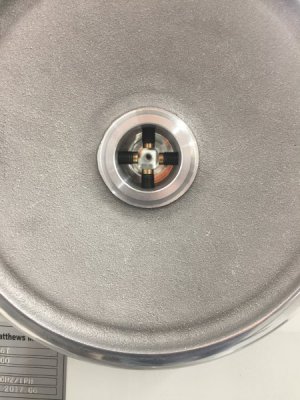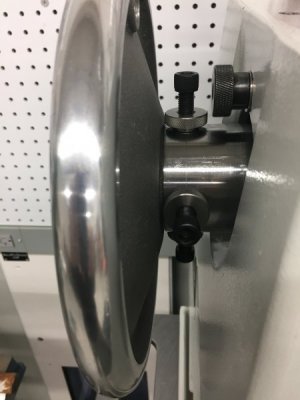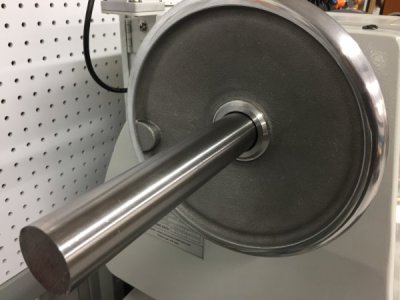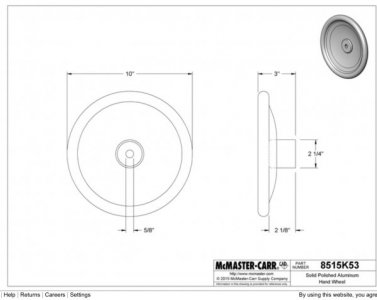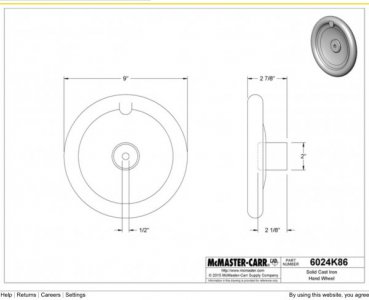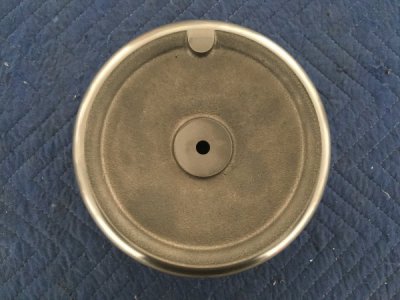Well, I take that back, I guess I am not quite finished with the Headstock Handwheel. Fast forward a few weeks, I am now at the point that I am aligning the lathe and feel that I need a Spider on the outboard side of the spindle to support longer stock that I am using. I am going to post the alignment stuff soon but thought I would post this Spider stuff first.
View attachment 290954
I am not sure where this post is going to end up in the thread or whether anyone will see it but here it is:
I started with some 3/8-24 brass tipped screws from Grizzly and some knurled thumb nuts and wave washers from McMaster-Carr. I removed the Handwheel from the lathe, secured it to a v-block on the milling machine, then drilled, tapped and milled a flat on the collar and then re-attached the hand wheel. I used shortened thumb nuts and wave washers as a locking mechanism. Pretty straightforward except that I needed a long drill bit, mill, and tap to reach the collar because of the attached wheel. Some pictures:
Supplies:
View attachment 290955View attachment 290956
Drilling, tapping milling:
View attachment 290957View attachment 290958
View attachment 290959View attachment 290960
Shortening the thumb-nuts:
View attachment 290962View attachment 290964
Assembled:
View attachment 290963View attachment 290961
View attachment 290966
View attachment 290965
I have to say that I have really enjoyed having the handwheel, especially when I was centering a piece in the 4JC with the dial indicator and going back-and-forth and back-and-forth trying to get rid of that last tenth before I center drilled; pretty tedious but the Handwheel made it a bit easier Also, I am planning on knurlIng some long 3/8” pieces of titanium soon so the Spider should come in very handy for that too. The Handwheel and Spider have been a good addition for me.
That’s it.


